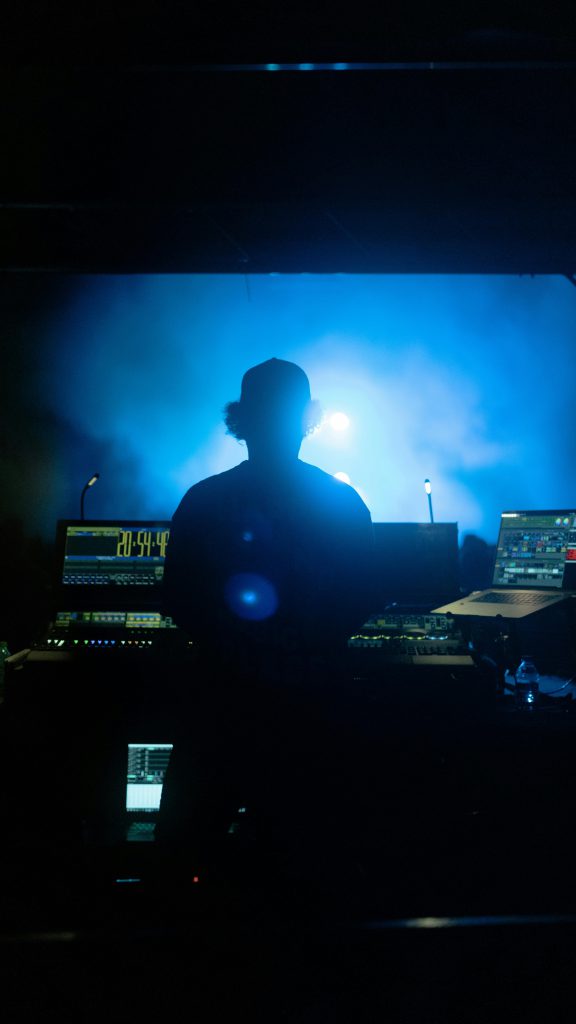Integrating a matrix processor with digital mixers can significantly enhance the flexibility and efficiency of your audio system. Whether you’re managing a live sound event, building a complex multi-zone audio system, or working in a studio, combining these two powerful tools allows you to route, process, and control audio signals with precision. However, proper integration requires careful planning and configuration to ensure seamless operation.
In this guide, we’ll explore the step-by-step process of integrating a matrix processor with digital mixers, covering everything from hardware connections to software configuration. By the end, you’ll be equipped to create a robust and scalable audio system that meets your needs.

Why Integrate a Matrix Processor with Digital Mixers?
Before diving into the integration process, let’s understand why combining a matrix processor with digital mixers is beneficial.
Advantages of Integration
- Flexible Routing: A matrix processor can route audio from the digital mixer to multiple zones or outputs, giving you precise control over signal distribution.
- Advanced Processing: Matrix processors offer additional DSP (digital signal processing) capabilities like EQ, dynamics, and delay, complementing the mixer’s built-in features.
- Scalability: Integration allows you to expand your system by adding more inputs, outputs, or zones.
- Centralized Control: Manage complex audio setups from a single interface, simplifying operations for live sound, installations, or broadcast systems.
Now that we’ve established the benefits, let’s move on to the integration process.
Step 1: Plan Your Audio System
Before connecting your matrix processor and digital mixer, it’s essential to plan your audio system to ensure compatibility and efficiency.
Define Your System Requirements
- Number of Inputs and Outputs: Determine how many sources (microphones, instruments, etc.) and destinations (speakers, zones, recording devices) your system will handle.
- Routing Needs: Identify which signals need to be routed to specific zones or processors.
- Processing Requirements: Decide if you’ll use the matrix processor or the digital mixer for tasks like EQ, compression, and delay.
Choose Compatible Devices
Ensure the matrix processor and digital mixer you’re using are compatible. Check if they support common protocols like:
- Dante: A popular audio-over-IP standard for seamless digital audio transmission.
- AES67/AVB: Alternative network audio protocols.
- Analog or Digital Connections: Confirm the available input/output options (e.g., XLR, TRS, or digital connections like AES/EBU).
Example Devices:
- Digital Mixers: Yamaha CL/QL Series, Behringer X32, Allen & Heath SQ Series.
- Matrix Processors: QSC Q-SYS Core, Biamp Tesira, Symetrix Prism.
Step 2: Connect the Matrix Processor to the Digital Mixer
The next step is to physically connect the matrix processor and digital mixer. The type of connection depends on the devices you’re using and your system requirements.
1. Analog Connections
If both devices support analog audio, connect the mixer’s outputs (e.g., XLR or TRS) to the matrix processor’s inputs.
- Mixer Outputs: Use the main or auxiliary outputs of the mixer to send audio to the processor.
- Processor Inputs: Match the input channels on the matrix processor to the mixer’s outputs.
Example:
- Channel 1 from the mixer is routed to Input 1 on the matrix processor.
- Channel 2 from the mixer is routed to Input 2 on the matrix processor.
2. Digital Connections
For higher quality and lower latency, use digital connections if available. Common options include:
- Dante: Connect both devices to the same Dante network switch. Use Dante Controller software to route audio between the mixer and processor.
- AES/EBU: If both devices support AES/EBU, connect them using a digital XLR cable.
- USB or Ethernet: Some devices allow direct digital connections via USB or Ethernet for control and audio transfer.
Step 3: Configure the Digital Mixer
Once the physical connections are established, configure the digital mixer to send audio to the matrix processor.
1. Assign Outputs
- Assign the mixer’s outputs (e.g., main mix, submixes, or auxiliary sends) to the channels feeding the matrix processor.
- Label each output for easy identification (e.g., “Zone 1,” “Recording Feed”).
2. Adjust Output Levels
Set appropriate output levels on the mixer to avoid clipping or distortion at the matrix processor’s inputs. Use the mixer’s meters to monitor signal levels.
3. Use Auxiliary Sends
If the mixer has auxiliary sends, use them to send specific audio channels (e.g., vocals, instruments) to the matrix processor for independent processing or routing.
Step 4: Configure the Matrix Processor
After setting up the mixer, configure the matrix processor to handle the incoming audio signals.
1. Input Configuration
- Map the matrix processor’s inputs to the mixer’s outputs. For example, assign Input 1 to the mixer’s Main Left and Input 2 to the Main Right.
- Adjust input gain to match the signal levels from the mixer.
2. Routing and Processing
- Use the matrix processor’s software or control interface to route audio signals to their destinations (e.g., speakers, zones, recording devices).
- Apply DSP as needed, such as EQ, compression, or delay, to optimize the audio for each zone.
3. Save Settings
Save your configuration as a preset or scene for easy recall during future events or sessions.
Step 5: Test the Integration
Before deploying your system, thoroughly test the integration to ensure everything is working as expected.
1. Check Signal Flow
- Verify that audio from the mixer is reaching the matrix processor.
- Monitor each output zone or device to ensure the correct audio is being routed.
2. Adjust Levels
- Fine-tune input and output levels to avoid distortion or feedback.
- Balance the mix for each zone or destination.
3. Troubleshoot Issues
Common problems and solutions include:
- No Audio Signal: Check cables, routing settings, and input/output assignments.
- Distorted Sound: Lower input or output levels to avoid clipping.
- Latency: Use digital connections like Dante to minimize latency.
Step 6: Optimize for Remote Control
Many modern matrix processors and digital mixers allow remote control via apps or software. Configure your system for remote access to streamline operations.
1. Connect to a Network
- Connect both the mixer and processor to a local network.
- Use a router or switch with sufficient bandwidth for audio and control data.
2. Use Manufacturer Apps
Download the control apps provided by the manufacturer (e.g., Yamaha StageMix, Q-SYS Designer) for remote access to settings and routing.
3. Test Remote Control
Ensure the app or software can control both devices seamlessly, allowing you to adjust settings from a laptop, tablet, or smartphone.
Best Practices for Integration
- Label Everything: Clearly label inputs, outputs, and routing paths to simplify troubleshooting.
- Backup Configurations: Save your mixer and processor settings to a USB drive or cloud storage.
- Plan for Redundancy: In critical setups, use redundant devices or paths to prevent system failures.
- Regular Maintenance: Update firmware and software to ensure compatibility and stability.
Integrating a matrix processor with digital mixers unlocks a new level of control and versatility for your audio system. Whether you’re designing a live sound setup, a multi-zone installation, or a recording studio, combining these two devices allows you to route, process, and manage audio signals with precision.
By following the steps outlined in this guide—planning your system, connecting devices, configuring settings, and testing the integration—you can create a scalable and efficient audio solution. With proper integration, your matrix processor and digital mixer will work seamlessly together, delivering exceptional sound quality and reliability for any application.
